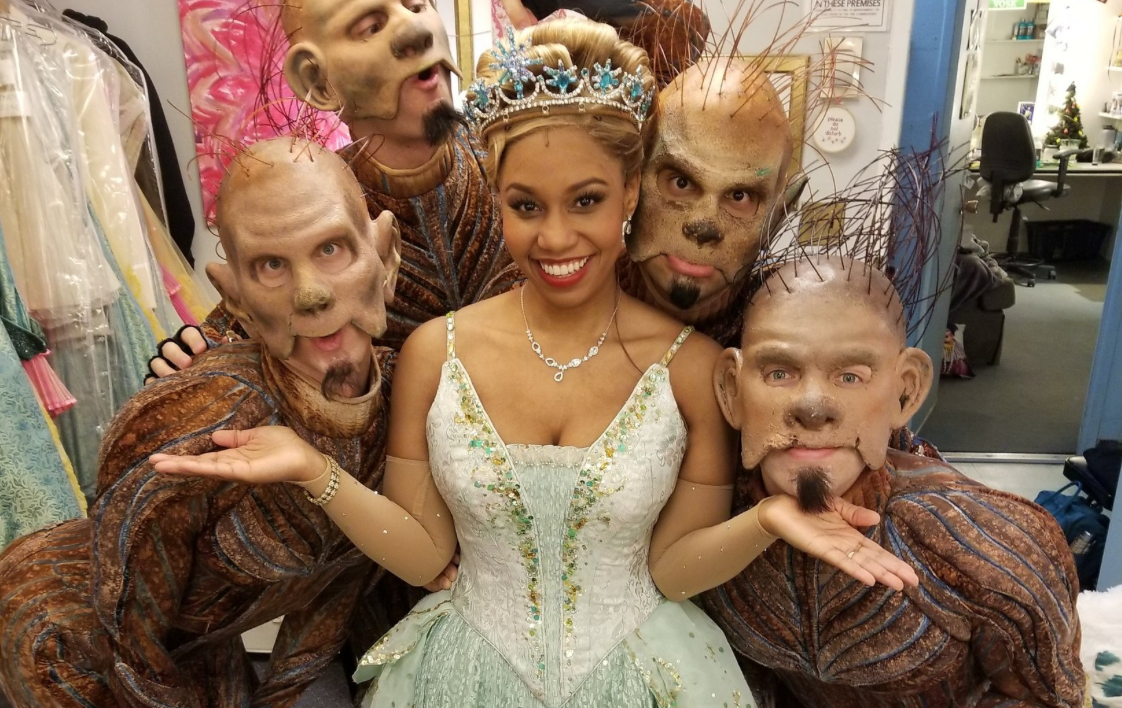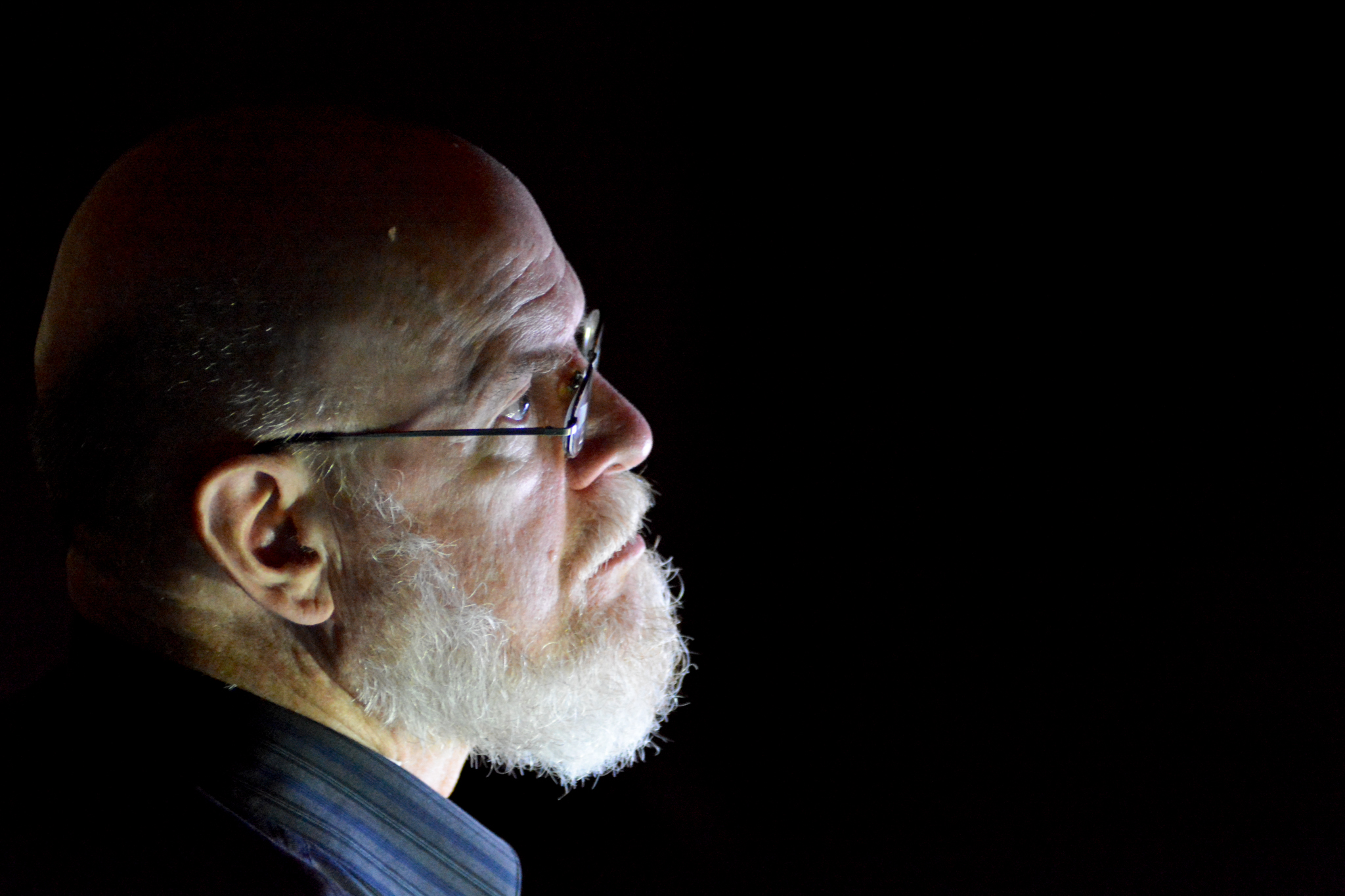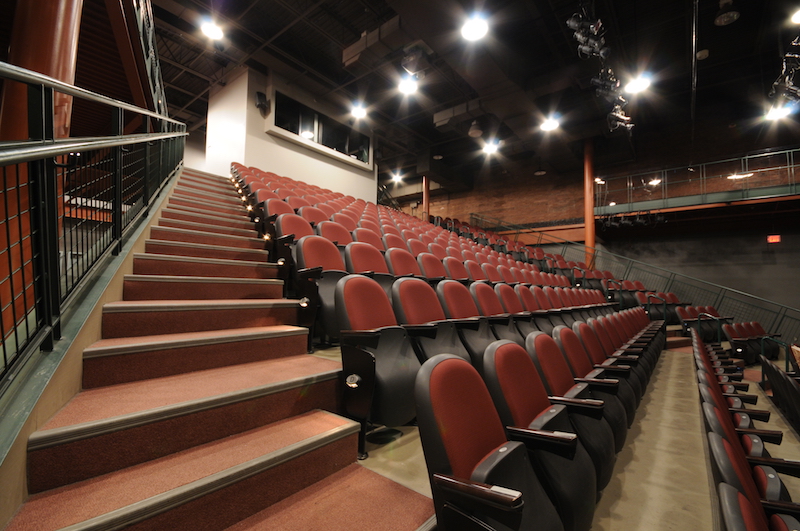Photo: Brittney Johnson as Glinda in Wicked, from her Twitter page.
If you are a trained actor or actress you may have experienced the “What’s your type talk” at some point during school. It is imperative to know your type, as it will determine the roles that you will audition for and later get cast in. An actor may use their type to sell their brand to a casting director or agent. Their branding is essentially centered around the type they and their coaches have decided they fit into.
Your type can be determined by several factors including demeanor, body-type, personality, age, the genre you play best in, etc. For instance, an actor who is consistently cast as the bad boy may have brooding facial features, chiseled arms, and a deep voice. My type: the “girl next door.” Sweet, soft facial features, a happy, light disposition and may be well-versed in comedy.
Angelina Jolie is often cast in roles that depict sexy, tough characters. She has a lean, attractive body, intense facial features, and a sultry, alluring voice. Cicely Tyson and I will not be cast in the same role right now because I could never pass as someone’s grandmother. Her age types her into roles that people younger than her cannot access.
Take a second to look back at the list of attributes above. What do they have in common? None of them have anything to do with race. Too often I am only brought in to audition for a role when the script specifically says “African-American Female, Early 20s.” Doing this not only limits me as an actress, but limits the audience’s perspective of the character, and doesn’t force the director to cast outside of their immediate network. Not to mention, the characters who have this specific description are often slaves, maids or the ghetto best friend. Casting in this way is a disservice to acting as an art form.
There are many cases in theater where the race of the characters is imperative to the narrative of the story— “Hairspray” or “West Side Story”—where there is a conflict between the chosen races. However, more often than not characters are described by their temperament, “A shy young girl, new to her school and nervous to speak out.”
If the time period and location do not affect the racial background of the characters, any actor could fill a role that is described like this. Unfortunately, black actors aren’t always cast as “shy” or “sweet” at first glance. As a result, viewers are led to believe that black people can only be loud or aggressive, like the roles they are so often cast in.
The market is saturated with shows like Empire and Power that only depict black people in one light. On stage, black actors shine in big-time musicals like “Motown” or “Dreamgirls,” but when you look to the classics, you only see a few specks of color in Shakespearean scenes. Black and brown actors have been forced into roles modeled after stereotypes created throughout history.
We are being told we are good enough to sing and dance for you, but we can’t be the leading lady or the sweet love interest. We just got a black Glinda for the FIRST TIME in history; that is an accomplishment. A black woman was cast in a role that was sweet and endearing and formerly only played by a white woman. More casting directors need to be willing to make choices like this. We should not only be seeing black and brown actors when they are portraying historical trauma or filling a stereotype.
So, where does that leave the actor? Are we meant to just sit around until someone in power wakes up and gives us the role we want? The short answer, no. Show up and show out over and over and over again. If there is a role that you want and you fit into the type of the character and know that you can play the role better than anyone else, go to the audition. Show the director what they didn’t know they wanted. I did and it worked.
Previously I mentioned that sometimes it is important to consider race because of historical and political context. However, there are some exceptions. In my first year of college, David Baecker at Russell Sage College directed “And Then They Came For Me: Remembering Anne Frank.” Immediately, I cast it off as a role that I could not get because I was not Jewish and did not look like Anne Frank. After my classmates confirmed that I, in fact, had no place auditioning for the role I decided not to audition. Until my mother urged me to go and speak to David about my reservations. He informed me that Anne Frank had previously been cast as a black actress in the same show at another theater. He advised me to audition and to “show up”, he noted that I often hold back in auditions and that I really needed to bring it. So, I did and I got the part! When the show went up I was terrified, I was being harassed and bullied by a lot of my peers for taking the part, “Blanne Frank” they called me. I was nervous that I’d taken a part that I didn’t deserve.
On closing night, a small old woman and her husband walked up to me and thanked me for my portrayal of Anne Frank. They had both experienced the holocaust firsthand. They said that it was beautiful to watch a black woman fill the role because it drew a parallel between the struggle that black people have faced historically and the persecution that Jewish individuals experienced during the Holocaust. David’s choice to color-blind cast the role of Anne Frank expanded the perspective of the audience and enriched the show by shedding light on other groups who have been affected by oppressive views in history. It is important to note that “color-blind” casting in historical pieces like this one is only possible when the racial groups presented have similar experiences. There are many cases in theater where the race of the characters is imperative to the narrative of the story, for instance, “Hairspray” or “West Side Story” where there is conflict between the chosen races. It would not serve the plot to cast a white Seaweed in “Hairspray” because Seaweed and his family are being targeted for being black. If Seaweed was white there would be no reason that he could not dance on a segregated dance show in the fifties. Casting me as Anne-Frank worked because black people have experienced a similar plight to that of Jewish individuals, therefore, I could realistically convey Anne Frank’s story.
With that said, it is not enough to “color-blind” cast traditionally white roles. Directors must reach outside of their usual ensemble of actors and find new, diverse talent that will best serve the role in all ways. Directors must extend an invitation to audition to ALL actors at the same time not just when they have a quota to fill or can’t find a black girl in her twenties. If the casting director has already made an effort to reach out to everyone and the pool still looks fairly white it is their responsibility to explore new avenues. I believe that diversity and representation should be the primary goal of a company from the beginning. Theater has the ability to be an expression of all groups, a place where everyone can connect and share. If you are truly representing the essence of theater you must work to assemble not only an ensemble of diverse actors but a board of administration from all backgrounds.
I was once told by a theater company that diversity was not apart of the first year of their five year plan. They would be working to broaden their audience and ensemble of actors down the line. I can understand wanting to assert yourself as a brand but, I cannot wrap my head around why inclusion must be looked at as a chore. An approach like this tells me that you don’t think I’m qualified enough or talented enough to work for you unless you’re in need of diversity. It makes me feel like an afterthought. My company Illuminate Theater has brought together over 50 black actors and performers and still, I am told by local directors that there are no professional black actors in the area. This is not the truth. The way I see it some local creators have gotten comfortable in their close networks of people who look like them and don’t see it necessary to search for, reach out to and connect with new and different creators unless it serves them.
It may seem easy to place blame on directors because they are the ones sitting behind the table but, it is the responsibility of the entire theater community to revolutionize the way that we cast actors. It is important that playwrights continue writing shows that tell the beautiful untold stories of black and brown people while not only focusing on our pain. New Plays such as “School Girls; Or, the African Mean Girls Play” by Jocelyn Bioh powerfully shines a light on issues of colorism while still creating fun, well-rounded characters with common desires, issues and dreams that anyone can relate to. Plays like this give voice to “the black experience” without turning us into a stereotype. Producers and theater administrators must create an all-encompassing season that lends space to all actors without just putting on the one “Black show” of the year. Actors are not often given a lot of power, so it is important that the entire theater community support them in getting roles that serve them and help them grow. It is time that we give black and brown actors more to play than a slave.
Morgan Heyward is the founder of Illuminate Theater, an actress, director, and producer committed to creating theater that is representative of all people. She graduated from Russell Sage where she starred as Anne Frank. Heyward is most recently known for her role as Lady in the Orange in “For colored girls who have considered suicide when the rainbow is enuf” and is finishing her own play, “Naturally.”






Trackbacks/Pingbacks